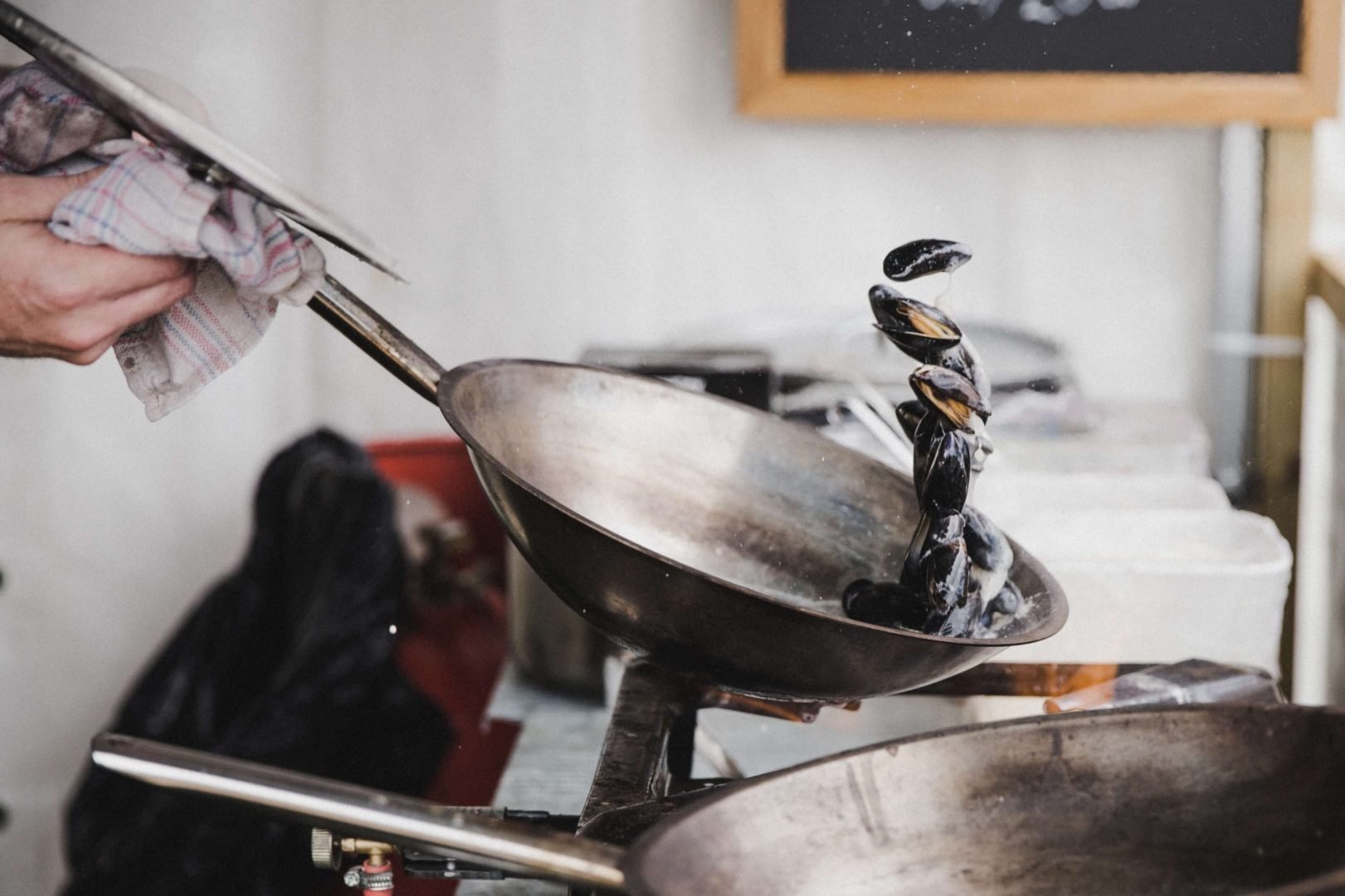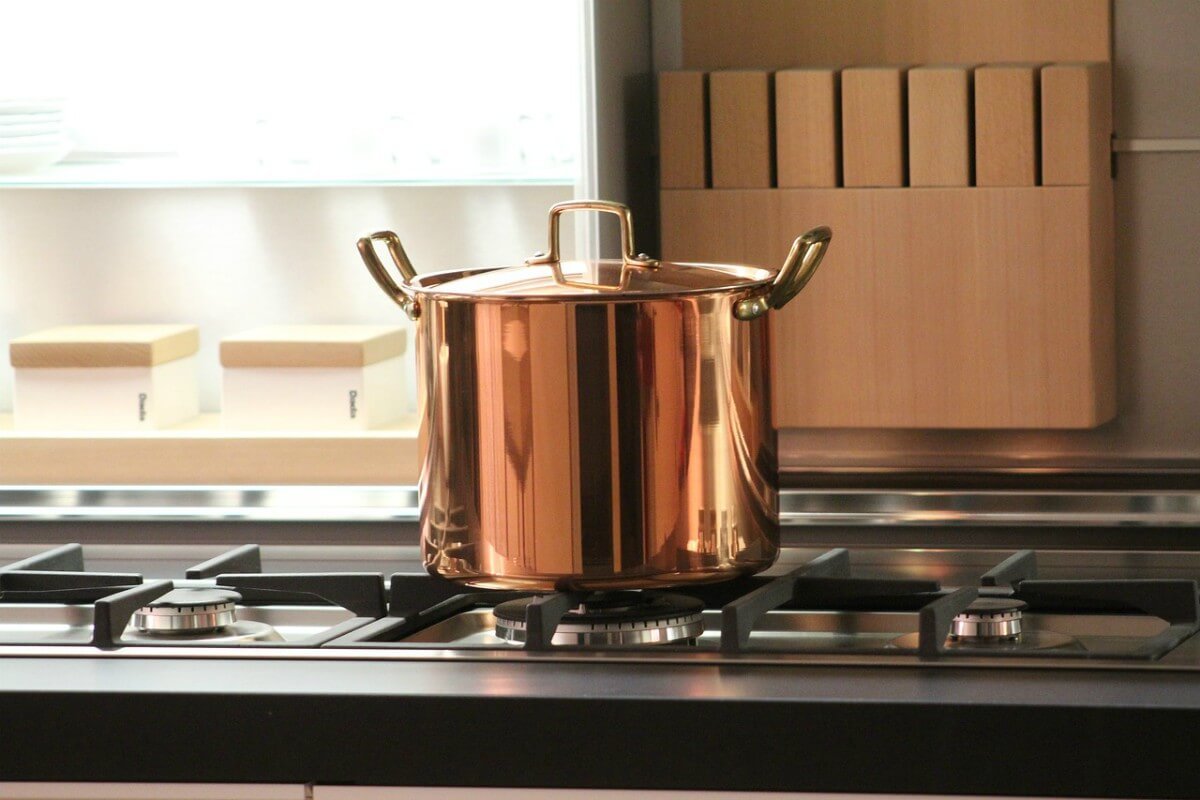Is Your Cookware Silently Poisoning You?
Discover > Texas Mom Blog > Is Your Cookware Silently Poisoning You?
So much is said these days about the food we eat. Making sure we consume fresh, organic, herbicide free, humanely raised food products. While we pay attention to the food, we tend to overlook our pots and pans we cook in. Tend to use the same cookware for ages on end without giving them the care they need or the change they deserve.
As a mom I am also guilty of this. I have my favorite pots that I bought as a newly wed wife. Three kids down and some of those pots are still giving service on my stove tops. As parents we need to give this subject another thought.
Lots of materials that are used in the making of cooking utensils leach chemicals when heated. Using the right cookware can have affect the food that is cooked in it and conversely, unsafe cookware cause food to be contaminated and over time impact the health of your family.
So what are the ‘risky’ metals we should be staying away from and what are the ‘safe’ ones when it comes to cookware?
Watch Out For
Non Stick Cookware
Widely popular in the developed world, Non stick utensils are mainly coated with a lining of perfluorinated acid and its chemicals. PFOA is the main chemical used in Teflon.
Non stick pans, household cleaners, cosmetics, furniture, waterproof clothing and food containers all contain PFC’s which breaks down into PFOA. Although PFC’s have useful attributes like keeping food from sticking to the pot, there have been several studies which have shown results that PFOA is likely to be carcinogenic.
The fumes your pot gives off, when left on a burner for too long can be poisonous. PFOA enters into the body through leaching into food at high temperatures.
Harmful effects of PFOA include cancer , hypothyroidism, reproductive problems and birth defects.
A study even determined that PFOA is more toxic to fetuses and babies than it is for adults.
Aluminum Cookware
Though aluminum cookware is very affordable, once the protective coating wears off, the aluminum can leach into food very easily. Aluminum toxicity can occur when the cells in your brain, lungs and bones accumulate residues of this metal. Brain cells of patients suffering from Alzheimer's have shown increased amounts of aluminum in them.
The disturbing fact is that aluminum is not just found in pots and pans, but also in antiperspirants, aluminum cans, the ever popular aluminum wrapping foil and in even in some toothpastes!
Plastic
Plastic containers are favored for microwave cooking as they are lightweight and unbreakable. But be very aware to not use any kind of plastic (even the microwave safe ones!) for long duration cooking and for longer periods of time. Try to completely avoid applying heat of any kind to plastic. This causes the plasticiser in the container to leach into the food, and cause serious health concerns over time. Though I would highly suggest reducing plastic waste,I still ask you to discard your plastic containers every three months. Especially if you have been using the containers in the microwave.
Ceramic Coated Cookware
Beware of the smooth ceramic coated pans that look very attractive in the store shelves. This coating, though is more desirable than the Teflon, wear off easily. Within a year, you will find the ceramic coat starts to wear off or chip away. The underlying metal starts to show and this metal is not treated to be safe, as it is undercover. The toxic metals can very easily leach into your food and it's better to just throw the whole pan away.
Copper Cookware
Copper is a mineral that is found in deficiency in our bodies so some additional copper coming out of a pan is actually a good thing. But too much copper will overpower zinc in the body and that can interfere with the adrenal and thyroid capacities. Vomiting, nausea and abdominal cramps could be caused from excess copper, so if you cook with copper and your family has been having any of these complaints repeatedly, you know what you have to do.
Keeping in mind peoples changing preferences, utensil manufacturers are coming up with new mixes of metals and coatings. These are being projected as being less harmful to the environment and our bodies. Whether these claims are true, only time will tell. But, there are few existing metals that are reliable when it comes to safe cooking.
Safe to Use Cookware
Silicone Cookware
Silicone is a rubber material which is made from bonded silicon and oxygen. We all have quite a few colorful silicone cooking equipment in our kitchens am sure. What's not to love about the non stick, hard wearing and stain-resistant tools that we can use for so many baking purposes. There are so far no health hazards related to silicone cookware. It does not seem to react with food or drinks. Silicone can also withstand high temperature cooking in ovens and does not emit any fumes.
Glass Cookware
Glass is by far the safest material around when it comes to cooking. There is glassware that can be used on stove tops and ovens while others are not for high temperature use. I have learnt that the hard way when my glassware has cracked in two after sitting on a hot stove for a couple minutes! Glass is very sturdy and does not give out poisonous fumes or residual substances into your food. Also very ideal for storage purposes, I recommend glass instead of plastics to avoid BPA (Bisphenol-A) interacting with food. Since it is quite inexpensive and easily available, this shouldn't be a problem.
Always read the manufacturer's instructions to know if you can use your glassware for cooking.
Stainless Steel Cookware
Pots and pans made from stainless steel are of different types depending on the mix of metals in them. Cookware with a 18/10 or 18/8 stamped on the bottom implies they are least likely to leach metals. One issue with stainless steel is that they give out nickel and chromium when exposed to acidic foods.
Cast Iron Cookware
The favorite pick among all materials in cast iron. Cast iron has been used for centuries for cooking food. Olden people used cast iron skillets and seasoned them for enhancing the performance of the wares.
Seasoning is when you coat the insides of your skillet with oil and bake it. This will fill up the surface of the skillet and make it non stick. It is essential that you season your cast iron pot before its first use, so it does not give a metallic taste in the food.
Now, there may be some leaching of iron , but iron intake is safe for us. Iron cookware only accounts for close to 20% of the daily required intake. Another plus point is that cast iron utensils age well. I have some of my moms old pots that she has passed on to me after I got married and I can say that they are in wonderful condition.
Enamel Coated Cast Iron Cookware
These are wonderful cooking utensils having all the goodness of cast iron and the benefits of having a coat of enamel on them. My bucket list of cookware consists of an enamel coated cast iron set of pots. You don't have to worry about acidic food activating the metals in the iron pot since they are coated with an enamel usually made of glass.
Cookware Maintenance
To maintain your cookware, it is important to know how to handle them.
I, for example, always use wooden ladles so the delicate coatings on my pots stay unscraped.
Wash your coated utensils in warm water with a soft scouring pad. Not the grisly metallic ones that will ruin the surfaces for sure.
Never leave an empty pot on the fire allowing it to overheat and give out fumes.
Do keep an eye on the wear and tear of surfaces.
Do not leave cooked acidic food in stainless steel or aluminum pots.
Try to minimize the use of plastic in the microwave. Switch to glass containers.
If you do reuse plastic containers, discard any oily surfaced, discolored, off-smelling ones immediately.
Do not heat silicone utensils to a higher temperature than 220 degrees centigrade as it risks melting at that kind of high temperature.
Purchase utensils from well established manufacturers that follow the health advisories given by the government.
Always read manufacturers notes before using cookware.
Non-stick Coating Material In The News
You will not find definitive warnings that materials like Teflon cause cancer, since a rule we go by in America is ‘innocent until proven guilty’. Or in this case, ‘safe until proven unsafe’. But reports by New York Department of Health suggest that this material is present in almost every American. It is more interesting that a court order in the early 2000’s uncovered the truth behind major Teflon manufacturing giants, 3M and DuPont. It was discovered that though these companies knew about the ill effects of perflourochemicals on the body, they tried to keep it under the covers.
In 2016, a feature from the New York Times magazine reported that 3M and DuPont had been carrying out secret studies on rats and dogs for a good number of decades. They found that PFOA causes liver enlargement and birth defects in rats. The report also mentions that later studies on female DuPont employees also revealed some form of birth defects in two out of seven births.
This information was never made public.
Since then, PFOA and PFOS have been phased out of use in America. But these are only two out of several thousand perflouroalkyl substances which are still in use in many consumer products.
While some cookware may be free of PFAS, we can not really tell what substances they do contain, as the manufacturers are not obligated to mention this publicly.
Of course there is no one safest material when it comes to cook ware, but we need all the info to make an informed choice about the food we are eating. Pay attention to how various foods react with your pots and if your food tastes different when cooked in different utensils and right after I am done writing this, I will hop off to do some safe-cookware shopping!
Now that you have read about the best material for your cookware, you might be wondering what kind of cookware to use for frying. Check out this post to learn more.





